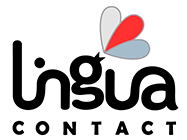Why translators love CATs


Why translators love CATs


CAT tools
CAT is an abbreviation for Computer-Assisted Translation. Usually, when people hear this term, the first thing they think about is machine translation tools like Google Translate. But CAT tools have nothing to do with machine translation.
What is the difference between computer-assisted and machine translation?
Practically right after computers were invented, different people had an idea to train computers to do translation. That’s how machine translation appeared. At first machine translation programs were based on bilingual dictionaries and a series of rules on syntax. But the optimism concerning machine translation replacing human translation soon disappeared, because the quality of the translation was far from being great. It was even far from being good. Since then, there have been quite a few new solutions and processes developed, but machine translation results still leave much to be desired, though the technology can be used to gain an overall understanding of the text in a language you don’t understand. However, it’s impossible to rely on such programs if you want the translation to be accurate, grammatically correct, and to sound as natural as possible. Besides, using Google Translate (and other online translation tools) in order to translate confidential documents means that their confidentiality will be compromised, because Google has a right to use your content for future searches and translations as it is written in their Terms of Service. Professional linguists are certainly aware of it. So they normally refrain from using Google Translate and the like in their work because of their low quality and privacy issues.
Computer-assisted translation is a totally different matter. Yes, we are still talking about software, but the translation process is managed completely by human translators. Translation is done by professionals. As for CAT tools, these special programs are used to streamline the translation process and improve the quality of work by giving access to terminology databases, helping to work with different file formats, making sure the translator uses the same equivalents for terms that repeat throughout the documents. So, even though the term “computer assisted translation” sounds close to “machine translation, in reality it is a completely different technology. Here we should say that not all translators use CAT tools in their work, but their popularity is growing fast.
What are the most popular CAT tools used by translators?
A while ago ProZ.com website conducted a survey about CAT tools used by translators. Here are the results of the survey:
- Trados
- Wordfast
- MemoQ
Other popular solutions are Déjà vu, Across, SDLX, Star Transit, and OmegaT. (see the original article here)
There are also some cloud-based CAT tools like Memsource, Wordfast Anywhere, XTM Cloud, Transifex and some others. Translators are embracing these solutions more and more since they make it possible to translate on the go, plus they don’t have privacy issues like Google Translate 😉
So what CAT tools do we use?
The answer is simple: we let our translators work with the tools they are most comfortable with in order to make our collaboration as pleasant and mutually beneficial as possible. And our clients benefit from this approach, too!
If you have any questions about the software we use, or just about anything related to translation and localization, feel free to contact us! We are happy to help!

 English
English










